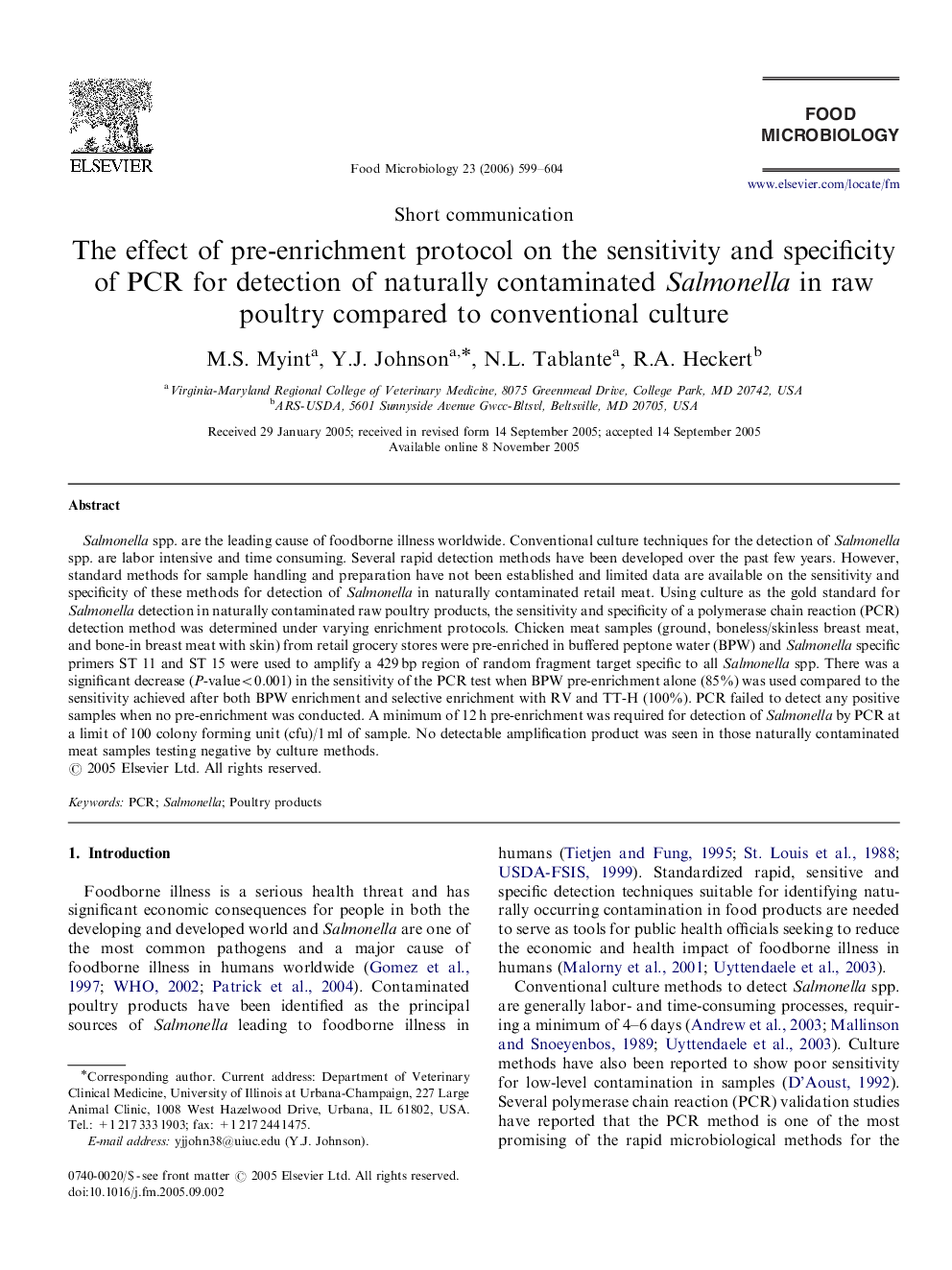| Article ID | Journal | Published Year | Pages | File Type |
|---|---|---|---|---|
| 4363936 | Food Microbiology | 2006 | 6 Pages |
Salmonella spp. are the leading cause of foodborne illness worldwide. Conventional culture techniques for the detection of Salmonella spp. are labor intensive and time consuming. Several rapid detection methods have been developed over the past few years. However, standard methods for sample handling and preparation have not been established and limited data are available on the sensitivity and specificity of these methods for detection of Salmonella in naturally contaminated retail meat. Using culture as the gold standard for Salmonella detection in naturally contaminated raw poultry products, the sensitivity and specificity of a polymerase chain reaction (PCR) detection method was determined under varying enrichment protocols. Chicken meat samples (ground, boneless/skinless breast meat, and bone-in breast meat with skin) from retail grocery stores were pre-enriched in buffered peptone water (BPW) and Salmonella specific primers ST 11 and ST 15 were used to amplify a 429 bp region of random fragment target specific to all Salmonella spp. There was a significant decrease (P-value<0.001) in the sensitivity of the PCR test when BPW pre-enrichment alone (85%) was used compared to the sensitivity achieved after both BPW enrichment and selective enrichment with RV and TT-H (100%). PCR failed to detect any positive samples when no pre-enrichment was conducted. A minimum of 12 h pre-enrichment was required for detection of Salmonella by PCR at a limit of 100 colony forming unit (cfu)/1 ml of sample. No detectable amplification product was seen in those naturally contaminated meat samples testing negative by culture methods.
